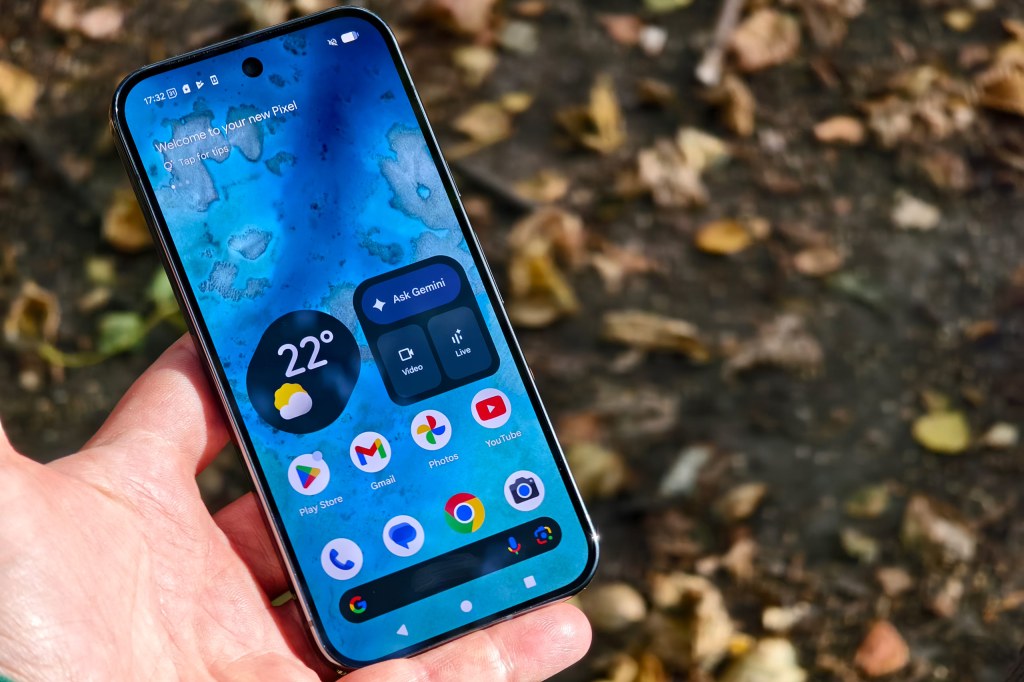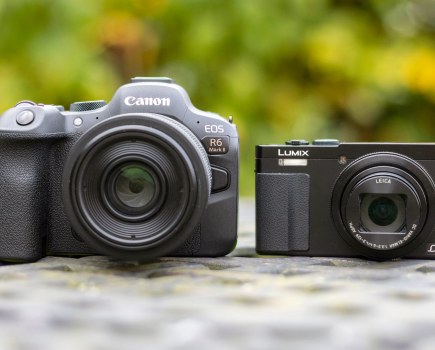One of the genres that the best smartphones for photography excel in is landscape photography. It makes sense when you think about it – when I’m shooting landscapes, I’m normally doing it in good light, with a wide-angle lens, and these kinds of conditions are perfect for smartphones. It’s certainly much easier than carrying a big full-frame camera and a bag of lenses.
But which to pick? I’ve chosen an array of the best of the best across the board – these are the smartphones that I’ve tested and I think deliver something really excellent for landscape shooting. You can see my sample images throughout to make up your own mind about which you prefer.
As you might expect given that these are the best of the best, they do cost a fair amount. I’ve given alternative suggestions throughout of where I think you could make a saving on an older model and get something almost as good. It can be useful to make a list of all the features you really want and see which smartphones match up – sometimes you’ll be surprised by the savings you can make.
For now though, read on to discover my picks of the best smartphones for landscapes.
Best phones for landscape photography – a quick list
- Apple iPhone 16 Pro Max – buy now
- Samsung Galaxy S25 Ultra – buy now
- Google Pixel 10 Pro – buy now
- Honor Magic 6 Pro – buy now
- Xiaomi 15 Ultra – buy now
Why you can trust Amateur Photographer
We spend many hours testing every product we recommend, in detail, in a variety of situations and shooting scenarios, and only use experts for our reviews, so you can be sure that you’re getting the best products. Find out more about our expert writers.
Apple iPhone 16 Pro Max

Amateur Photographer verdict
Its zoom capability and well-performing camera setup set it apart from the competition. The huge screen will appeal to landscape shooters.- 5x zoom lens
- Pictures / videos look great on the huge screen
- Option to shoot in RAW
- New camera control button
- Maybe too large for some users
- High price, and fairly incremental upgrade from predecessor
- Low resolution telephoto camera
At a glance:
- 48MP wide camera, f/1.78 aperture, 24mm equivalent
- 48MP ultrawide camera, f/2.2 aperture, 13mm equivalent
- 12MP 5x telephoto, f/2.8 aperture, 120mm equivalent
- 6.9” Super Retina XDR OLED screen
- iOS 18
- Processor: A18 Pro Chip
- Price: from $1,199 / £1,199
The most recent iPhone flagship model, the iPhone 16 Pro Max, has a number of features that make it particularly useful for landscape photography.
First off is the main sensor (1x lens, 24mm f/1.78 equivalent) which has a high 48MP resolution. By default, images are output at 24MP – a significant boost from the 12MP standard output of most other smartphones. You can also shoot at the full 48MP resolution if you prefer.
That high-resolution sensor gives you some interesting options for shooting at ‘different’ focal lengths, which make use of different areas of the sensor. So, not only can you shoot at the default 24mm, there’s also 28mm and 35mm options, as well as a 2x, 48mm equivalent. It’s also possible to shoot in Apple’s ‘ProRAW’ format, which gives you DNG files that you can work on in software either on your computer or on the phone itself.

An ultra-wide lens opens you up to 13mm equivalent, and while not quite as good a performer as the main lens, it’s great for capturing wide vistas and demonstrates plenty of detail. You can also shoot in raw format with this lens.
To round it out, there’s a 5x optical zoom lens, giving you a 120mm equivalent. Unlike its iPhone 15 Pro and Pro Max predecessor, where only the bigger Max version had the 5x zoom, both the 16 Pro and Pro Max house the same camera specs. If you would like to save a bit of cash – and if you’re happy with a 3x optical zoom, you can plump for the iPhone 15 Pro instead. You can save even more money by going for the ‘Non Pro’ iPhone 15 models, but you will lose the ability to shoot in raw format.
Perhaps the biggest downside of previous models were the lack of Pro mode, that being said, Apple finally fixed this by adding the new “Camera Control” button, which is designed to give you the experience of shooting with the iPhone as if it were a “real” camera.
Read our iPhone 16 Pro Max Review.
Samsung Galaxy S25 Ultra

Amateur Photographer verdict
Samsung has done it again – the S25 Ultra is one of the best Android camera phones, ideal for landscapes with raw support and a beefed up ultrawide sensor.- Three high-res sensors
- Improved 50MP ultrawide camera
- Consistently excellent image quality
- Fairly minor camera upgrade from last model
- Very high price
- Screen only available in one size
At a glance:
- 200MP wide camera, 24mm, f/1.7, 1/1.3” sensor, PDAF, OIS
- 50MP ultrawide camera, 13mm, f/1.9, PDAF
- 10MP telephoto camera, 67mm, f/2.4, 1/3.52” sensor, PDAF, OIS, 3x optical zoom
- 50MP periscope telephoto camera, 111mm, f/3.4, 1/2.52” sensor, PDAF, OIS, 5x optical zoom
- 12MP f/2.2, 26mm selfie camera with AF
- 8K 24/30fps, 4K 30/60/120fps
- From $1,299 / £1,249
Samsung’s S series range has been our go-to recommendation for the best smartphone for photographers for quite some time now, so it’s no surprise to see the latest flagship on the list here for landscape photography.
The S25 Ultra sits at the top of the range. It’s not a huge update from the previous year’s S24 Ultra, but it does add a number of new features that are of interest to landscape photographers. Spoilers up top – if you’ve already got an S24 Ultra (or, to be honest, an S23 Ultra) it’s not really worth the upgrade, but it is undoubtedly the best of the bunch.
First up is the impressively performing ultra-high resolution 200MP ‘main’ sensor, which is fronted by a 23mm f/1.7 equivalent lens. This is joined by three additional lenses for a total of four – that’s one more than the majority of smartphones, so you’ve got even more flexibility there. You get an ultra-wide, plus two telephotos (3x and 5x).
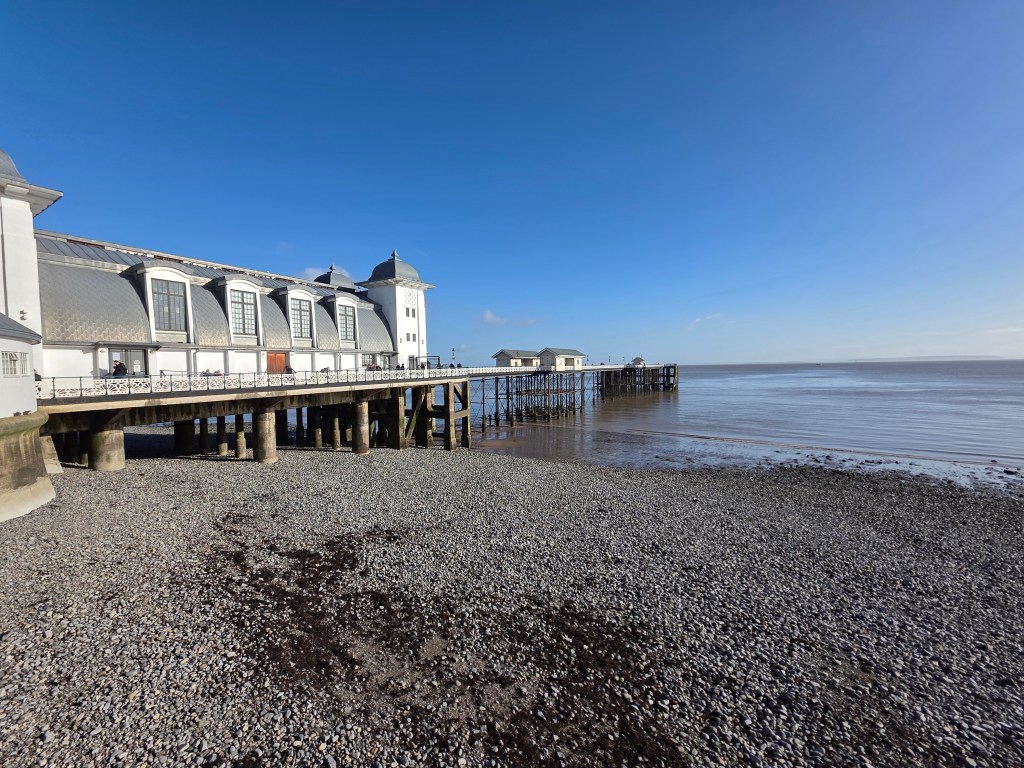
All this was also the case for the S24 Ultra, but the S25 Ultra has upgraded the ultrawide sensor from a 12MP sensor to 50MP, giving you more detail in the kinds of sweeping vistas that are so popular in landscapes. In day-to-day shooting you probably won’t notice much of a difference, but for printing images, blowing them up or cropping in, the extra pixels can be a real lifesaver.
Elsewhere, it’s got all the smoothness we’ve come to expect from Samsung phones. The native camera app is well featured, offering the ability to shoot in raw format, and there’s a high-resolution shooting mode for those moments where you want to take advantage of all those megapixels.
Read our full Samsung Galaxy S25 Ultra
Google Pixel 10 Pro
Amateur Photographer verdict
The 10 Pro has some of the best cameras and shooting features on a camera phone, but so does the 9 Pro, and it’s considerably cheaper. Great in low light landscapes, including astrophotography.- Excellent camera setup with effectively 5 rear cameras
- Lovely colours produced in images
- Really useful shooting features
- Only 128GB on base model
- Video Boost for 8K video is dreadful
- Chunky camera protrusion
At a glance:
- 50MP f/1.68 wide, 1/1.3inch, OIS, 24mm equiv.
- 48MP f/1.7 ultra-wide with AF, 1/2.55inch, 12mm equiv.
- 48MP f/2.8, 5x telephoto, 1/2.55inch, OIS, 110mm equiv. (up to 100x Pro Res Zoom)
- 42MP f/2.2 selfie with AF
- 6.3inch, 1-120Hz screen, 3300nits peak brightness
- 4K video front/rear (8K powered by Video boost upscaling)
- 4870mAh (30W charging, 15W wireless)
- 152.8 x 72 x 8.5mm, 207g (IP68)
The Pixel 10 Pro is the latest flagship from the company. Essentially, there’s slightly increased battery life compared to the Pixel 9 Pro, slightly improved screen, and better speakers, as well as Bluetooth v6.0, and it’s slightly heavier. If you already have the 9 Pro, there’s little reason to upgrade to this model.
There’s a triple camera setup on the rear of the phone, with an ultra-wide angle, wide-angle, and 5x telephoto cameras. The 1x lens offers 2x “optical quality” zoom, whilst the 5x lens offers a 10x “optical quality” zoom, as seen on the previous model, and I was impressed by the results, even finding it a match for a phone with a true 10x optical lens.
The Pixel 10 Pro offers a lot of cameras for the price, yet the inclusion of just 128GB storage is disappointing for the price. (For those who regularly record 4K video, this would run out fast.)
The cameras give consistent results, whether you use the ultra-wide, the wide, or the telephoto, and the 2x and 10x options also give impressive results. The 5x telephoto camera is a periscope design, albeit not optimised for macro or close-up photography.
Night photography remains a major strength of this phone, as it did its predecessor the Pixel 9 Pro. When light is low, night mode will activate automatically. It can be used with any camera; be it the ultra-wide, wide-angle or telephoto camera, and results are quite impressive. Viewed at full size, images can look soft. Results will vary depending on a number of factors, with worse results in darker conditions, as expected.
Put it on a solid surface such as a wall, a beanbag, or a tripod with phone adapter, and the astrophotography features become incredibly impressive offering exposures in the minutes rather than seconds.
Excellent astrophotography shooting options are available if you want to shoot landscapes in very low light – which could be enough to tip the balance from another model to the Pixel if you like to head out after dark. Google also claims there have been improvements to low-light shooting in the Pixel 9 Pro with some new functionality including Night-sight panoramic photos.
Read our full Google Pixel 10 Pro Review.
Honor Magic 6 Pro

Amateur Photographer verdict
One of the best-value flagships on the market, the Magic 6 Pro impressed us more than its successor, and delivers excellent quality for landscapes.- Triple high-resolution cameras
- High-end features at an affordable price
- Capable Night Mode
- No option for larger storage
- Not available in every market
At a glance:
- 50MP 23mm equivalent main camera, f/1.4-2.0 auto aperture
- 50MP 13mm equivalent ultrawide camera, f/2.0
- 180MP 2.5x periscope telephoto camera, f/2.6
- 4K video at 30/60fps
- Around $900 / £800
This isn’t the newest camera from Honor, a smartphone manufacturer that was formerly part of Huawei – that’s the Honor Magic 7 Pro. However, my colleague Josh Waller was left somewhat cold by that phone, with its drab colours, poor telephoto and inconsistent implementation of AI.
So, for this recommendation I’m sticking with the Honor Magic 6 Pro, a phone that I tested myself and really rather liked. It’s priced beneath other flagships but you don’t have to compromise specs – it’s got three high-resolution sensors in wide, ultrawide and telephoto configurations.
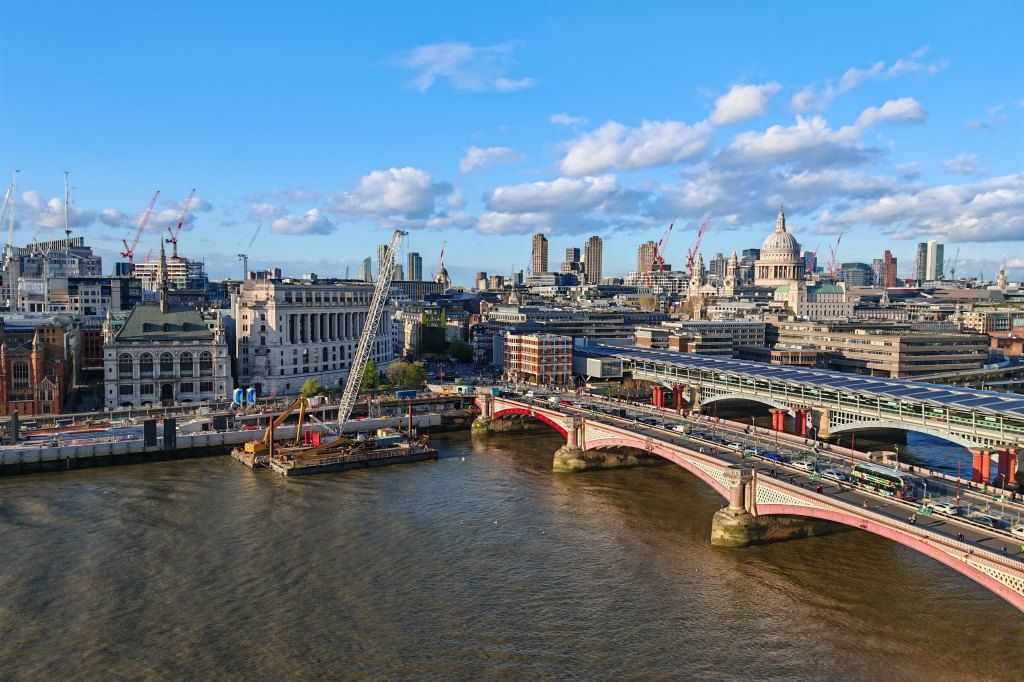
The native camera app is excellent, with a Pro mode that gives you all the control over settings you could want. You can quickly switch to HDR shooting or different colour modes, depending on your scene, and can quickly turn on a grid or horizontal level to help with composition.
Image quality is generally excellent, as it was on the Magic 5 Pro. It’s best from the main camera, as is standard on most smartphones, but the ultra-wide puts in a good shift, which is great for landscapes. The quality also holds up for the 5x and 10x zooms, though I found things got pretty smudgy beyond that – and the “100x” zoom is little more than a marketing gimmick.
Presenting a significant saving over rivals like the Samsung S25 Ultra or the iPhone 16 Pro, the Honor Magic 6 Pro is definitely one to consider – though it can be difficult to find in some territories.
Read our Honor Magic 6 Pro review.
Xiaomi 15 Ultra

Amateur Photographer verdict
A 1-inch sensor puts the Xiaomi 15 Ultra well ahead of the pack photographically. It’s expensive and can be hard to find, but it’s superb for landscapes.- Class leading one-inch type sensor
- 4x high-resolution lenses
- Leica partnership
- Great photography kit available
- Very high price
- Not available in all markets
- Main lens aperture no longer variable
At a glance:
- 50MP f/1.63 23mm equivalent camera with one-inch Sony LYT-900 sensor
- 50MP f/2.2 14mm equivalent ultrawide camera
- 50MP f/1.8 70mm equivalent 3x floating telephoto camera
- 200MP f/2.6 100mm 4.3x periscope telephoto camera
- 8K video at up to 30fps
- From £1,299
Smartphones have a reputation for having tiny sensors – but the Xiaomi 15 Ultra is something different. With a 1-inch imaging sensor for its main camera, it’s more in the realm of a premium compact camera than the phones it rubs shoulders with, and when you see this paired with a selection of Leica-made lenses, you begin to understand why so many publications (us included) have started describing these phones as the best smartphones for photography.
There are caveats of course. Xiaomi’s phones are expensive, and they can also be hard to get – the Chinese manufacturer’s products are not available in all territories. With that out of the way – if you can get it and you can afford it, this is a hell of a phone for landscapes, and is one of the most impressive I’ve ever tested.
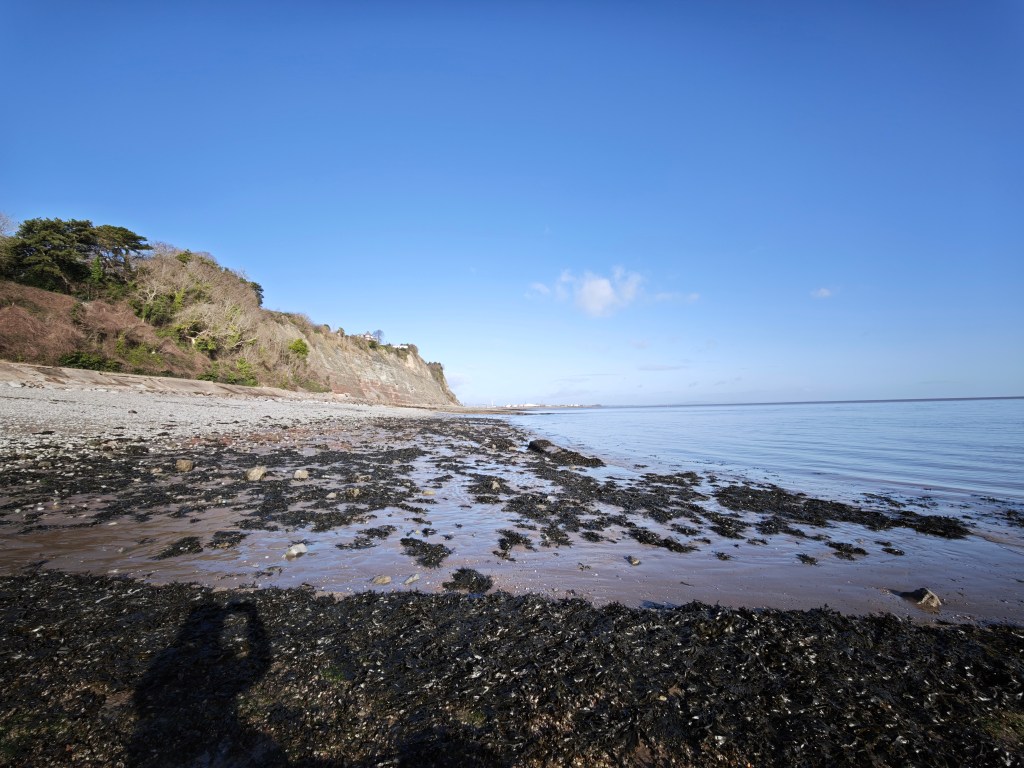
The 50MP Sony LYT-900 one-inch type sensor on the main camera delivers sumptuous images, full of punchy colours, vibrant detail and excellent dynamic range – I came away seriously impressed. The ultrawide also puts in a good shift, which is good news for landscapes. Blue skies in particular look absolutely dazzling.
The Leica-made lenses do an excellent job across the board. My small nitpick is that on previous versions, the main lens had a variable aperture that could stop down to f/4. This one doesn’t, and that makes it harder to get images that are fully in focus front-to-back, as is generally desirable for landscapes. It’s not a dealbreaker though – most people won’t notice when viewing the images on a phone screen – and doesn’t detract from one of the most capable smartphones for landscapes.
Read our full Xiaomi 15 Ultra review
Related content:
Follow AP on Facebook, Twitter, Instagram, YouTube and TikTok.


